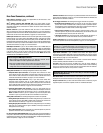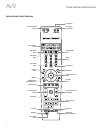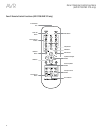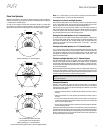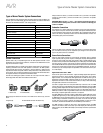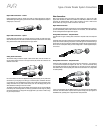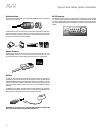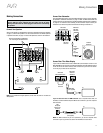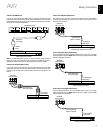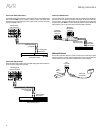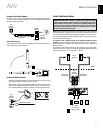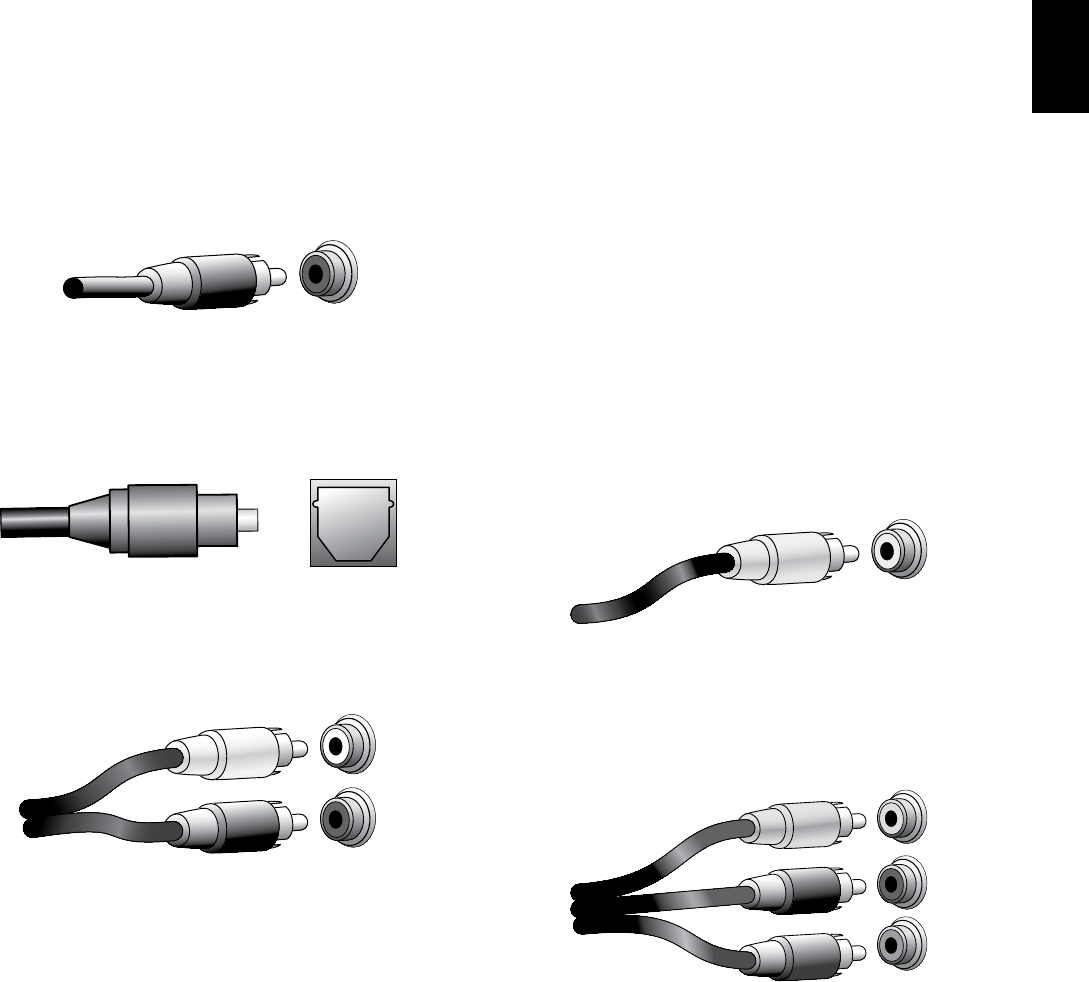
15
ENGLISH
AVR
Types of Home Theater System Connections
Digital Audio Connections – Coaxial
Coaxial digital audio jacks are usually color-coded in orange. Although they look like
standard RCA-type analog jacks, you should not connect coaxial digital audio outputs to
analog inputs or vice versa.
Digital Audio Connections – Optical
Optical digital audio connectors are normally covered by a shutter to protect them from
dust. The shutter opens as the cable is inserted. Optical input connectors are color-coded
using a black shutter, while optical outputs use a gray shutter.
Analog Audio Connections
Two-channel analog connections require a stereo audio cable, with one connector for
the left channel (white) and one for the right channel (red). These two connectors are
attached to each other.
For source devices that have both digital and analog audio outputs, you may make both
connections. If you are going to be setting up a multizone system, remember that Zone
2 is an audio-only zone (the AVR does not have a Zone 2 video output). Therefore, make
analog connections for any audio source devices (such as a CD changer) that you will
want available for listening in Zone 2 at all times.
The analog connections also feed the analog record outputs. You may record materials
from Blu-ray Disc recordings, DVDs or other copy-protected sources using only analog
connections. Remember to comply with all copyright laws if you choose to make a copy
for your own personal use.
Video Connections
Many source devices output both audio and video signals (e.g., Blu-ray Disc, DVD
player, cable television box, HDTV tuner, satellite box, VCR, DVR). In addition to an audio
connection as described above, make a video connection for each of these source
devices. Make only one type of video connection for each device.
Digital Video Connections
If you have already connected a source device to one of the AVR’s HDMI input connectors,
you have automatically made a video connection for that device, since the HDMI cable
carries both digital audio and digital video signals.
Analog Video Connections – Composite Video
Your AVR uses two types of analog video connections: composite video and component
video.
Composite video is the basic connection most commonly available. Both the chrominance
(color) and luminance (intensity) components of the video signal are transmitted using a
single cable. The jack is usually color-coded yellow and looks like an analog audio jack.
Do not connect a composite video jack to an analog audio or coaxial digital audio jack,
or vice versa.
Analog Video Connections – Component Video
Component video separates the video signal into three components – one luminance
(“Y”) and two sub-sampled color signals (“Pb” and “Pr”) – that are transmitted using
three separate cables that are color-coded green (Y), blue (Pb) and red (Pr). Component
video cables that join three separate green, blue and red connectors into a single cable
are sold separately.
If your TV or video display has an HDMI connection, we recommend it as the best quality
connection. Your AVR converts composite and component analog video input signals to
the HDMI format, upscaling them to high-definition 1080p resolution.



